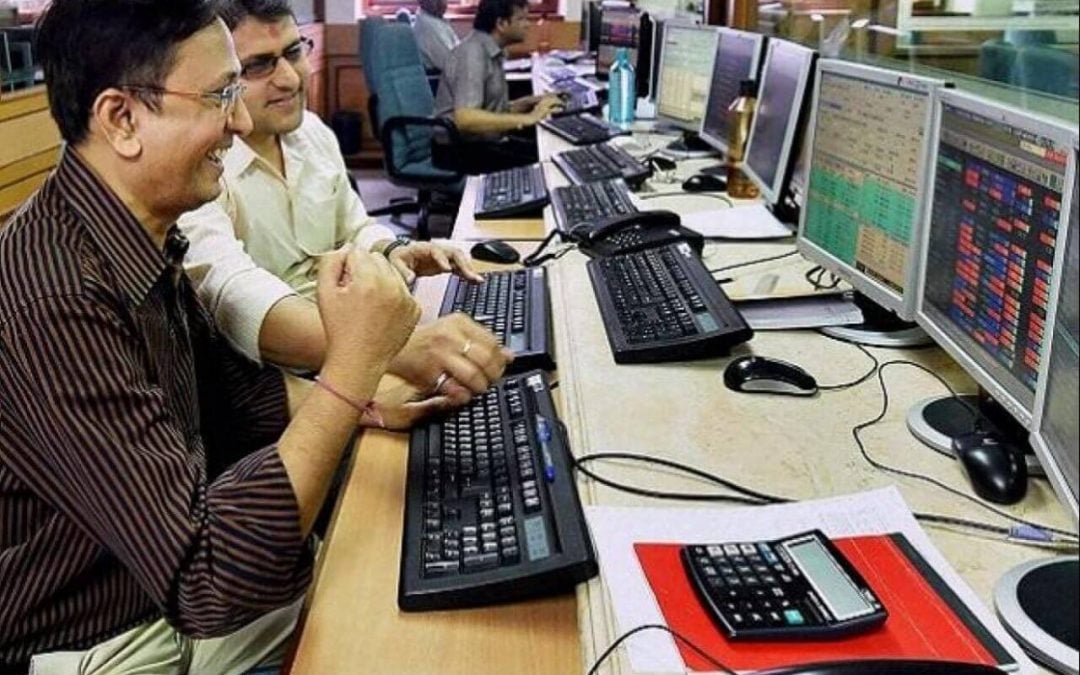Havells is a Fast Moving Electrical Goods (FMEG) Company, founded by Late Sh. Qimat Rai Gupta. He set up an electrical goods shop at the electrical market of Bhagirath Palace in Delhi. The Company is currently headed by Anil Rai Gupta, as its Chairman and Managing Director.
Havells India has a global footprint in 60+ countries & a network of 17,000+ dealers. It has manufacturing operations in 15 plants spread across India. It houses brand names like Havells, LLOYD, Crabtree, Standard, REO & Havells Studio.
Segment analysis involves breaking down a company’s financial and operational performance into different segments or divisions to gain insights into how each segment contributes to the overall business. This type of analysis is valuable for investors, analysts, and company management because it helps identify areas of strength or weakness within the organization. Here’s a step-by-step guide on how to conduct segment analysis:
1. Identify Business Segments:
- Start by identifying the various segments or divisions of the company. These segments can be based on product lines, geographic regions, customer types, or any other meaningful categorization.
2. Gather Financial Data:
- Collect financial data for each business segment. This includes revenue, operating profit, expenses, and any other relevant financial metrics. Ensure that the data is consistent and accurately allocated to each segment.
3. Analyze Revenue Contribution:
- Determine the contribution of each segment to the company’s total revenue. This will help identify which segments are the main revenue drivers.
4. Profitability Analysis:
- Assess the profitability of each segment by analyzing its operating profit margin, gross margin, and net profit margin. Identify which segments are the most profitable and which may need improvement.
5. Growth Rates:
- Compare the revenue growth rates of each segment over time. Identify segments that are growing rapidly and those that are stagnant or declining.
6. Segment Trends:
- Look for trends within each segment. Are there shifts in customer preferences, competitive dynamics, or market conditions affecting specific segments?
7. Segment Assets and Liabilities:
- Analyze the segment’s assets and liabilities. This includes understanding the capital investments, working capital requirements, and debt obligations associated with each segment.
8. Return on Investment (ROI):
- Calculate the ROI for each segment by dividing its operating profit by the invested capital. This helps determine which segments are generating the highest returns relative to their capital investments.
9. Market Share:
- Evaluate the market share of each segment within its respective industry or market. This can provide insights into the segment’s competitive position.
10. Risk Assessment: – Identify specific risks and challenges associated with each segment. This could include regulatory risks, market volatility, or supply chain vulnerabilities.
11. Allocation of Corporate Expenses: – Consider how corporate expenses, such as administrative costs or R&D spending, are allocated to each segment. Ensure that these allocations are done accurately.
12. Segment Strategy: – Review the strategic plans and initiatives for each segment. Understand how the company plans to grow or optimize each business area.
13. Cross-Segment Synergies: – Identify any opportunities for cross-segment synergies or cost savings. Sometimes, businesses can leverage resources more efficiently by coordinating activities across segments.
14. External Factors: – Take into account external factors that may impact individual segments, such as economic conditions, regulatory changes, or technological advancements.
15. Reporting and Communication: – Prepare clear and concise reports summarizing the findings of the segment analysis. Share this information with relevant stakeholders, including company management, investors, and analysts.
Segment analysis provides a deeper understanding of a company’s performance and can help in making strategic decisions, resource allocation, and investment assessments. It is particularly useful in diversified companies with multiple business lines or geographic operations.
Now we will understand the 5 business segments of Havells.
Cables: The Cables business being the biggest revenue generator bringing in 32% of FY23’s revenue. The cables segment grew by 19.12% from the previous year.
Lloyd consumer: It is the 2nd largest segment that brought in ~20% of FY23’s revenue. This segment nearly doubled over the previous year (~49% YoY). Havells manufactures TVs, ACs, Washing machines & refrigerators under this brand.
Consumer durables: It is the 3rd largest business segment of the company. Fans, Appliances & Water Heaters are sold in this segment. It contributes to 19.54% of the firm’s revenue. Demand for this segment remained muted, growing by just ~8% over the previous year.
Switchgear: As an individual segment of its own is responsible for ~13% of FY23’s revenue. The segment comprises of domestic, industrial switchgears & capacitors. It saw a decent growth of ~19% over the previous year.
Lighting & Fixtures: It is the 5th largest segment that brought in ~10% revenue & grew by ~17%. Havells also manufactures Motors, solar pumps, water purifiers & personal grooming products. This collectively brought it 5.63% of revenue & grew by 25% over the previous year.
FY23 witnessed a mixed operating environment as it had a healthy business outlook, while at the same time commodity price fluctuations killed margins.
The consumer electricals and durables industry continued to perform well with demand expanding on the back of urbanization, electrification, and higher disposable incomes in Indian households. Smart-connected homes are on the rise, as the younger population is contributing to buying decisions in the home.
We will now examine the industry of each individual segment.
These electronic consumer durables contribute to improving the quality of life and convenience in modern households. They are characterized by their durability, reliability, and the role they play in daily living. Advances in technology have led to the development of energy-efficient and smart appliances, which can be controlled remotely and offer additional features to enhance their functionality.
The fan industry moved to BEE-rated energy-efficient fans with all manufacturers phasing out non-rated fans by December 2022. In the pre-transition phase, there was initially some uncertainty with significant destocking, but just before the transition, there was healthy pickup by channels.
The industry continues to witness higher demand for premium. Demand rose in Tier 2 and Tier 3 cities as well.
The “Make in India” initiative has led to the local manufacturing of mixer grinders (MG) and juicer mixer grinders (JMG). Other categories like induction cooktops, steam irons, toasters, room heaters, hand blenders, etc. have followed suit.
The category experienced stable growth in FY23 in spite of decreasing metal prices for the major part of the year and copper price volatility. The industry continued its transition from the unorganized to the organized segment with increased consumer focus on buying branded and reliable products for homes and workplaces.
Increased government spending on infrastructure, education, health, manufacturing hubs, and expansion of 5G network all contributed to the growth of the cable industry.
There is a strong demand for visibility across all industrial segments which led to an overall improved environment for the industrial cable sector. In the coming years, various sectors like renewable energy, data centers, metros, 5G, airports, defense, and digitalization are expected to provide sustainable growth.
Now, the industry is focusing on selling specialized cables such as heat-resistant flame retardant (HRFR) cables, flame retardant and low smoke halogen (FRLS-H) cables, and halogen-free flame retardant (HFFR) cables.
The Company reported a 21.32% YoY increase in revenue, growing from Rs. 13,938 Cr. in FY22 to Rs. 16,910 Cr. in FY23. The growth was led by the expansion of the Lloyd business which saw a spectacular growth of 49%. It maintains a 5 Year CAGR growth of ~14%.
Despite reporting a double-digit growth in revenue, the Company saw its Net Profits fall by ~10%, from Rs. 1196Cr in FY22 to Rs. 1072Cr in FY23. This was due to an increase in the cost of raw materials which rose by ~20% over the previous year & cost ~55% of FY23’s sales. The Net profit is growing at 5 Year CAGR of ~8%.
The Company reported operating profit margins of 9.58%, coming at a 5-year low for the Company, much lower than the 5-year average of 12.18%.
Net Profits of the Company fell in the ~6% category in FY23, much lower than the 5-year average of 8.10%.
The Company reported a Return on Capital Employed of 23.07%, a 3 Year Low for the Company, significantly lower than the 5-year average of 26.59%.
Its Return on Equity dipped to below the 20% category, being reported at ~17%, lower than the 5 Year Average of ~20%. The fall in the Company’s profitability margins was the cause of the low return ratios.
The Company is virtually debt-free with a debt-to-equity of 0x. During the year, it paid Rs. 393.69 Cr. as part of its debt payments & it currently has no Short Term or Long Term Debt obligation. Interest Coverage ratio remains at a 5-year high of 27.28x.
Please note that these are general strategies and considerations that apply to many companies in the electrical equipment industry. The specific future plans of Havells India will depend on its leadership, market conditions, industry trends, and its assessment of opportunities and challenges in the coming years. To get the most accurate and up-to-date information about Havells India’s future plans, it’s advisable to refer to the company’s official announcements, annual reports, and press releases.
Anil Rai Gupta, CMD of Havells India in an interview with The Economic Times, says in FY23 the company will cover 2,800 additional towns with a population of 10,000-50,000. The Company plans to sell white goods, such as Air Conditioners, refrigerators, and washing machines in these markets. They aim to build an organized distribution network, such as the one built by the FMCG Peers.
Havells India plans to launch Havells Studio Meditate Air Purifier, Q-Tron MCCB Range, Glamtubes and Nimbus downlights, Lloyd ACs with AQI Indicator and on-device voice (ODV) features in the coming year, which is expected to further strengthen its consumer durables market of both Havells & Lloyd.
Havells India is set on a growth trajectory on the back of the growth of its Cables & Lloyd Consumer segment. The urbanization of Indians coupled with the rising temperatures in India makes a really good combination to spur up demand for its products.
The Company reported a ~67% fall in Net Operating Cash Flow, due to ~25% & ~27% increase in Inventories as well as Trade Receivables respectively, with these assets collectively holding up ~41% of the Company’s Total Assets. These raise liquidity risks in its financials & must be kept in check.
[contact-form][contact-field label=”Name” type=”name” required=”true” /][contact-field label=”Email” type=”email” required=”true” /][contact-field label=”Website” type=”url” /][contact-field label=”Message” type=”textarea” /][/contact-form]

































